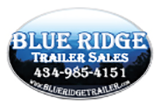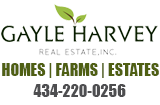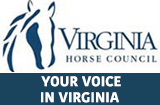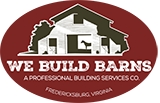Use Emotional Intelligence to Improve Your Riding
Submitted by: Shari Jaeger Goodwin
Email Address: shari(at)jaeger2.com
Date Added: 3/11/2011
Use Emotional Intelligence to Improve Your Riding
By Shari Jaeger Goodwin
Anyone who works with horses knows that the more balanced we are emotionally and physically, the more successful we will be with our horse. We must be clear and confident and manage our emotions and those of our horse at all times. We must be flexible and able to quickly respond appropriately to changing situations – we must not take things personally. These are the same qualities that comprise strong emotional intelligence skills exhibited by the best leaders in the world. Emotional intelligence consists of two main elements: how we manage our emotions; and how we manage our relationships with others. Effective use of emotional intelligence with our mount creates a happy and long-lasting partnership.
Managing our emotions involves identifying our current emotional state, e.g., happy, sad, mad, stressed, content, etc., and understanding why we are in that state. Knowing and controlling our “triggers,” or emotional hot buttons, is central to this element as well as understanding how to alter a potentially negative mindset to one that is more optimistic and productive.
Managing our relationships with others involves accurately assessing and responding to others. Riders and leaders with strong relationship management skills demonstrate empathy – awareness of others’ feelings – and actively work to develop others, readily resolve conflicts, build strong emotional bonds, and continually motivate and inspire.
These emotional intelligence elements can be readily applied to riding.
How many times have you gone out to the barn after work for a relaxing ride on your favorite mount only to be frustrated, doubtful, and on the brink of tears an hour or so later? Hmm, what could have happened? Just yesterday he was perfect during your lesson, soft and obedient, a delightful willing partner. You adjust your tack, look over his back for sore spots, pick up his feet, and run your hands down his legs to check for heat. Nothing.
Maybe we need to look in another area. Did you come to the barn tense, rushed, or with an agenda? Or perhaps you were nervous that you may not be able to replicate the beautiful ride from yesterday. Maybe you have a show this weekend?
Horses reflect our emotional state and can be tremendous assistants in developing our emotional intelligence. As prey animals, they flee from unbalanced energy and never follow a doubtful leader. Here are a few questions we should ask ourselves before entering the barn:
• How is my breathing? Is it shallow? If so, take deep breaths to allow oxygen to flow.
• How does my body feel? Is it tense anywhere? Scan your entire body and release any tension, start with your feet and work your way up to your head. Don’t forget your jaw, eye muscles, and scalp.
• What am I thinking about? Are you distracted from all your work or family commitments? Was rush hour a nightmare?
Get yourself centered and clear stressful emotions and that noise in your head before you enter the barn so you can see your horse with a clear mind and body. This also allows your horse to see you without the swirl of frenetic scary energy.
Ok, now that you’ve successfully managed yourself, its time to manage your relationship with others, namely your horse. How is your horse feeling? What is his reaction as you come near the stall or pasture? Is he keen to see you or turning around and walking off? It may be time to re-establish your relationship. For an optimal relationship with your horse, he must see you as the leader, and you must inspire and motivate this emotion in him. As we know, horses are highly sensitive and intelligent; if we treat them with respect, we are much more likely to gain a willing partner. Ideally, we want our horse to look forward to our riding sessions. The way you first interact with your horse sets the tone for each session so take the time to set this foundation. Once you establish mutual respect, it takes much less time.
Pay attention when you groom your horse to how he is reacting. Don’t just brush in a perfunctory manner to get the tack on as fast as possible. You can tack up quite quickly with a super fast grooming in a very attentive caring manner.
Once you are ready to mount, check yourself again to be sure you are clear headed and relaxed. Take a deep breath and release any tension. Also be sensitive to how you mount. Use a mounting block and land gently in the saddle to minimize torque on the saddle and avoid back strain (for both you and the horse!).
Once mounted, feel the swing of your horse’s back, is he walking straight, is your body following, are you holding anywhere? Breathe and release and relax into the rhythm of each gait. Check yourself throughout your ride and definitely before you ask for something new. For example, before you turn down the line to your first set of fences, make sure that your breathing is steady and your body is centered and relaxed. If you feel a quickening in your heart as you think about your next move, your horse will feel that too and may get tense. If he rushes a fence, check yourself to be sure that you were not holding or tensing somewhere, perhaps you may have held your breath? The same applies to dressage or any other riding discipline; before you ask for a lead change or half-pass, or anything else, get yourself centered and relaxed. Set your intention and allow it to happen. This is sometimes much harder than it sounds! Also, be sure to frequently tell your horse how well he’s doing, this is essential to keep him inspired and motivated.
If you’ve checked yourself and everything is in order, perhaps your mount needs a bit more inspiration. Before you up the ante with spurs (or bigger spurs), a stronger bit, or a more aggressive approach, change up your program and see how your horse responds. Like people, horses get bored with the same old routine; spice it up with something different – try small fences if you normally do flatwork, or free-jump; free lunge over poles; go on a trail ride; school in a different location, e.g., a field instead of a ring; do hill work; go for a gallop. Be innovative with your exercises and engage your horse’s brain. Pay attention to how he learns best and make sure to offer exercises that appeal to his learning method. Creating a diverse program will keep your horse motivated and happy and sure up this important partnership.
Above all, have fun using emotional intelligence and watch your relationships blossom!
________________________________________
Shari Jaeger Goodwin owns Jaeger2, a business and personal coaching firm and runs Alpha Horse Leadership Training for HUMANS, an equine-assisted leadership program. Jaeger2 offers individual and group coaching sessions and workshops on leadership, business/project management, and setting and meeting personal and professional goals. Shari can be reached at shari@jaeger2.com and www.jaeger2.com.
|



